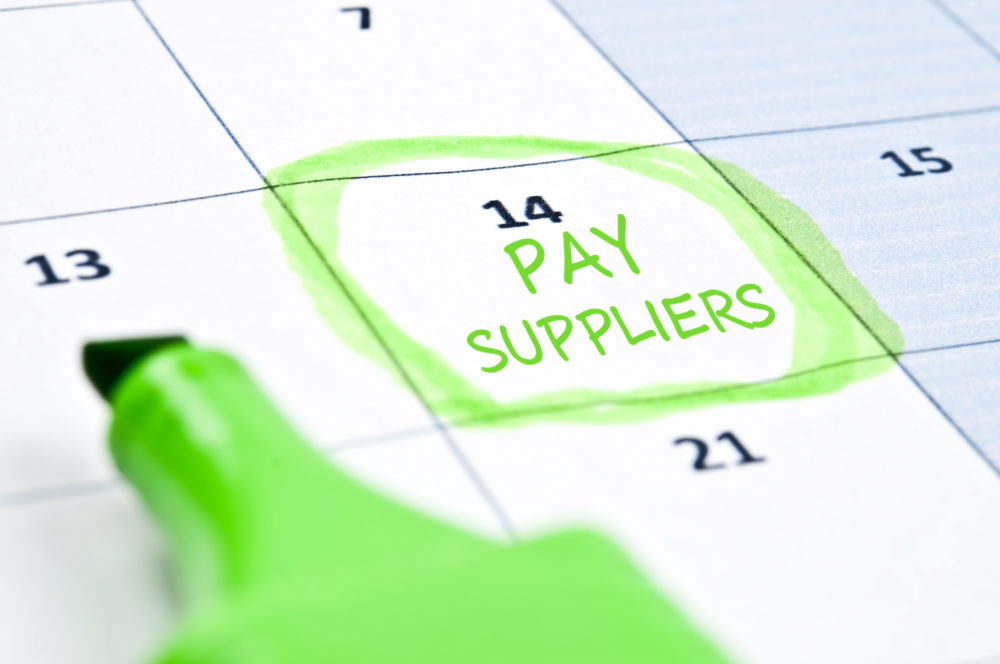Data from Red Flag Alert shows that despite emergency Covid-19 measures and Government support, levels of insolvent business debt increased by 3.3 per cent last year.
This saw total levels of insolvent debt rise from £1.83bn to £1.89bn in 2020. Had the Government not intervened with grants, loans, furlough payments and limitations on insolvencies, the number of companies going out of business and the trail of unpaid invoices they leave behind, could have been significantly higher.
Indeed, the reality is that the companies which would have typically failed last year – even when removing the pandemic from the equation – are still teetering on the brink. They will find it extremely difficult to survive when the Government’s Covid-19 support finishes and they are expected to start repaying debts, which is likely to see a spike in insolvencies later this year and into 2022.
>See also – Insolvency: Advice for companies in trouble
When one of these failing companies is a supplier, it can leave other businesses – their customers – to count the costs of insolvency. Customers may find themselves out of pocket for goods or services they’ve paid for in advance, which can longer be fulfilled, or they may find their supply chain stops almost overnight.
There are many practical ways that companies can protect themselves in the event of a supplier insolvency. Contracts can be drawn up and contingencies planned to maintain the flow of goods and services when insolvency chokes plan A. This may see the supply provision transferred to an already vetted and approved backup supplier. It may also be possible to structure ownership of goods, so that these belong to a customer as soon as production is finalised. This can ringfence them from assets being frozen during the insolvency process.
Although these measures can offer a business effective protection during supplier insolvency, there are steps that a company can take to mitigate the chances of them being sucked into an insolvency situation in the first place.
With the right data and insight, a customer can determine the financial health of the companies they are planning to procure from and opt to partner with the businesses in the strongest financial position and least at risk of failure.
There are a number of key things to look out for:
Consider supplier cash flow
First and foremost, a business should hone in on a supplier’s balance sheet. How do their levels of debt stack up against revenue? How have levels of debt changed in recent years? This information can provide insight on a supplier’s liquidity ratio – essentially their ability to successfully meet their financial liabilities. A shrinking ratio is often an early warning sign of deteriorating financial performance that points towards insolvency.
Poor liquidity can lead to a constant need to plug holes in cash flow, which is expensive, time-consuming, and often fatal for a business. This can also compromise a supplier’s ability to fulfil their core service, which may mean lower quality and poorer reliability, even before they reach the point of insolvency.
Beware of late accounting or charges in accounting periods
Overdue accounts or a change in a filing period are clear indicators that a company is in trouble. It may indicate a supplier’s business is poorly managed and doesn’t have the procedures in place to meet statutory obligations. Overdue accounts can also delay obtaining a view on the financial health of a company, while repetitive accounting period adjustments are a common feature in the history of failed companies.
Check your suppliers’ suppliers
Insolvencies can quickly ripple through supply chains and one of the most effective ways to protect against this is to gauge the financial health of the sources that a supplier relies on. Running credit checks on companies further down the supply chain can identify risks, which may appear to have several degrees of separation from your business but can actually pinpoint problems that may only be months away.
For example, if a provider of raw materials is experiencing financial distress and at risk of insolvency, it’s likely to cause the supplier considerable disruption that’s time-consuming and costly to rectify as it seeks replacement sources. This also risks the supplier potentially defaulting on other customer orders, jeopardising their revenue and cash flow.
Check your suppliers’ other customers
Understanding the financial health of the other customers that a supplier relies on is an effective way of determining the viability of a supply company. Running a credit check on a supplier’s sources of revenue can highlight any dangers to their income streams and consideration can then be given to the impact of this. In some instances, a supplier can be a well-run operation that’s doing everything right day-to-day, but unable to survive a sudden drop in income because an important customer has gone bust.
With this in mind, it’s always particularly useful to take note of large Company Voluntary Administrations (CVAs) and other insolvencies and work backwards to understand the domino effect of these. One large company going out of business can literally sucks tens and even hundreds of millions of pounds out of supply chains, leaving other companies, including suppliers, at serious risk of failure.
Unfortunately, a wave of supplier insolvencies seems inevitable and could be triggered by the end of the furlough scheme later this year. It’s important that companies don’t just seek to protect their interests during the insolvency process but also take steps to avoid being dragged into such scenarios in the first place.
Richard West is managing director of Red Flag Alert.






